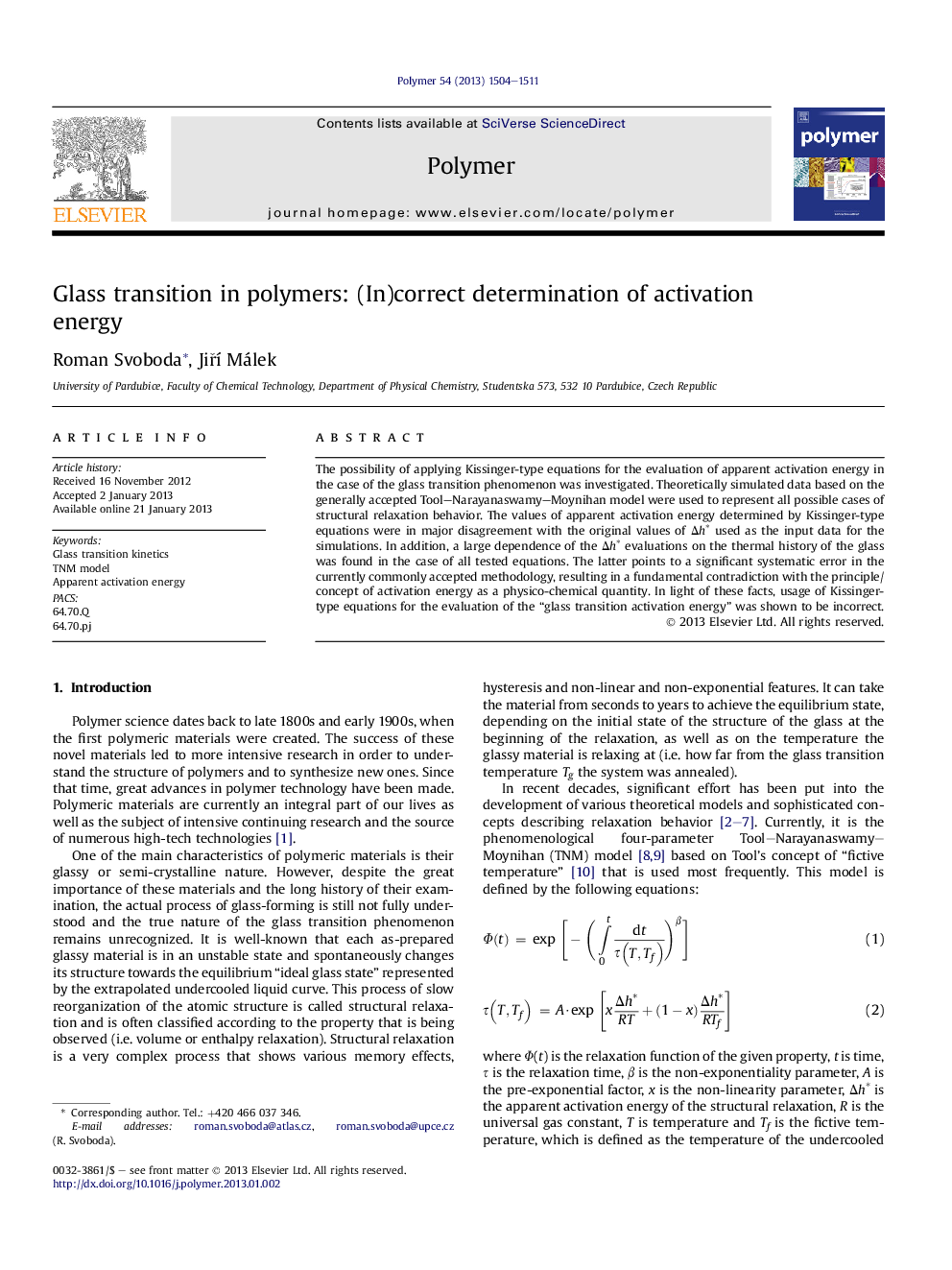| Article ID | Journal | Published Year | Pages | File Type |
|---|---|---|---|---|
| 5182691 | Polymer | 2013 | 8 Pages |
The possibility of applying Kissinger-type equations for the evaluation of apparent activation energy in the case of the glass transition phenomenon was investigated. Theoretically simulated data based on the generally accepted Tool-Narayanaswamy-Moynihan model were used to represent all possible cases of structural relaxation behavior. The values of apparent activation energy determined by Kissinger-type equations were in major disagreement with the original values of Îhâ used as the input data for the simulations. In addition, a large dependence of the Îhâ evaluations on the thermal history of the glass was found in the case of all tested equations. The latter points to a significant systematic error in the currently commonly accepted methodology, resulting in a fundamental contradiction with the principle/concept of activation energy as a physico-chemical quantity. In light of these facts, usage of Kissinger-type equations for the evaluation of the “glass transition activation energy” was shown to be incorrect.
Graphical abstractDownload full-size image
